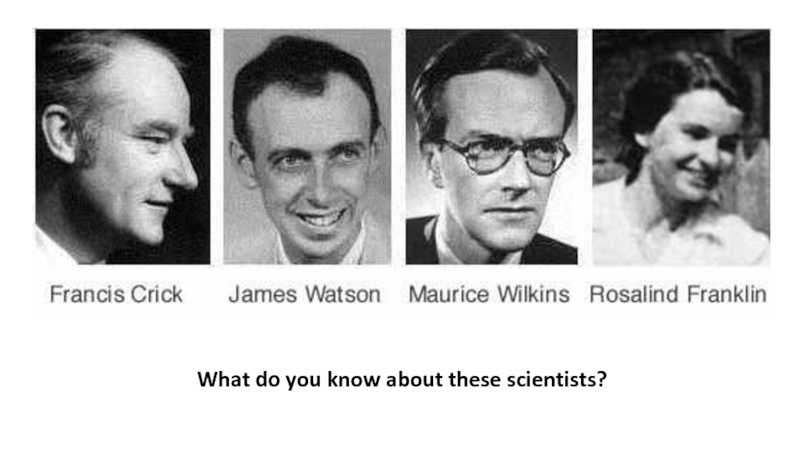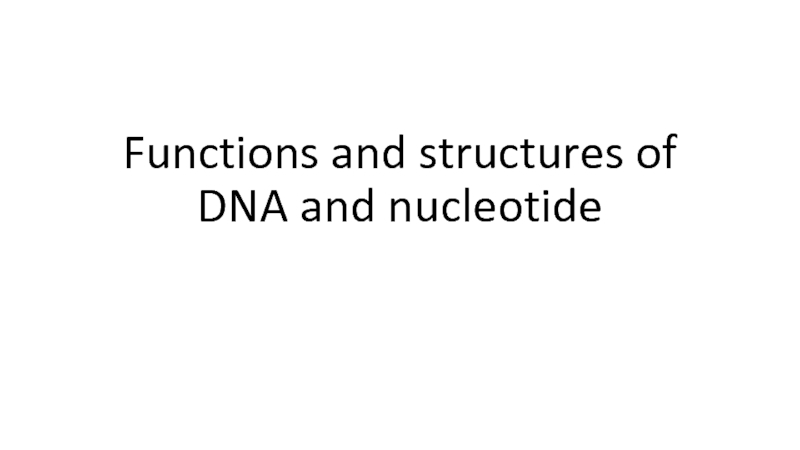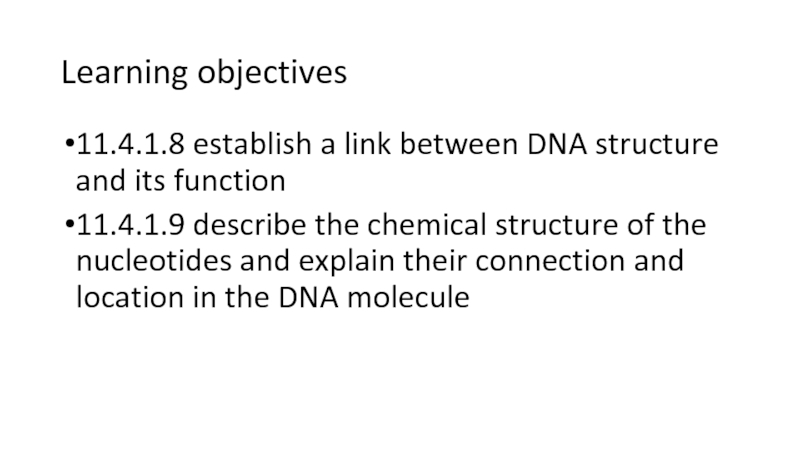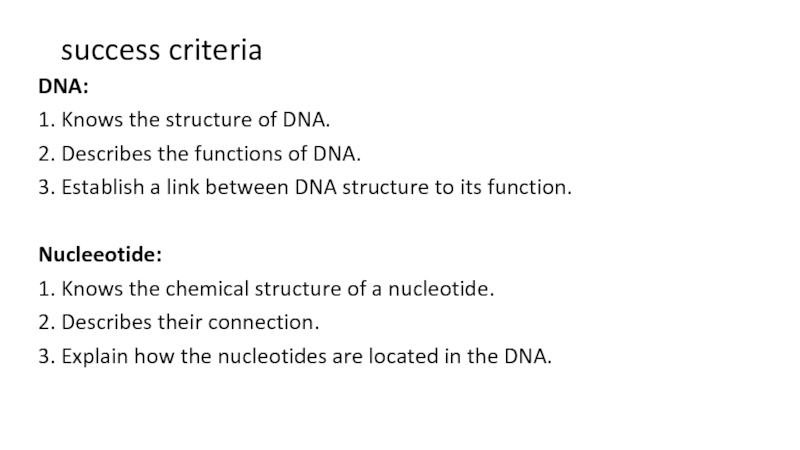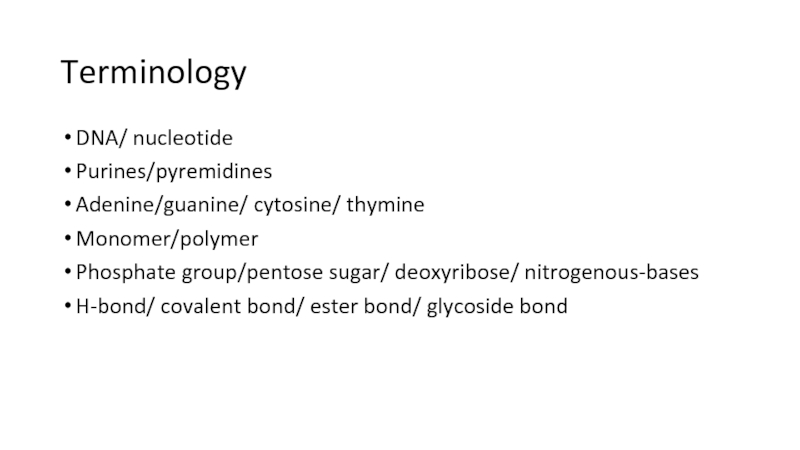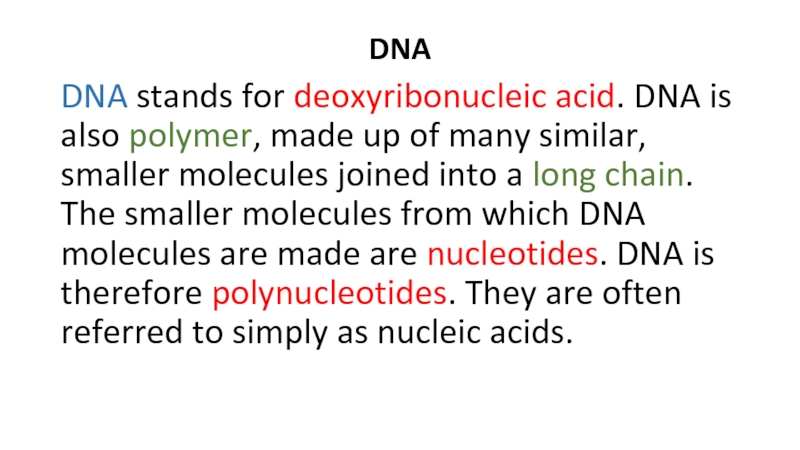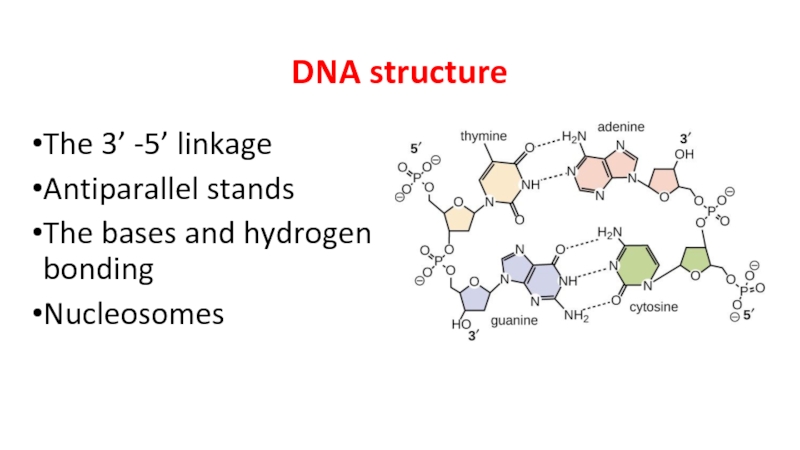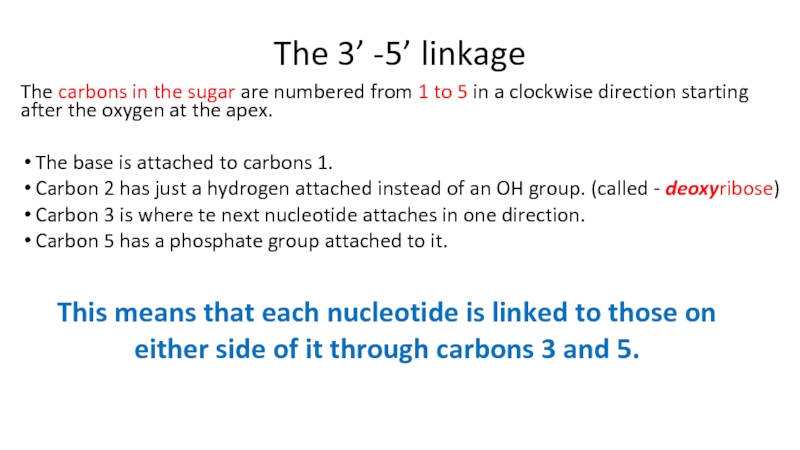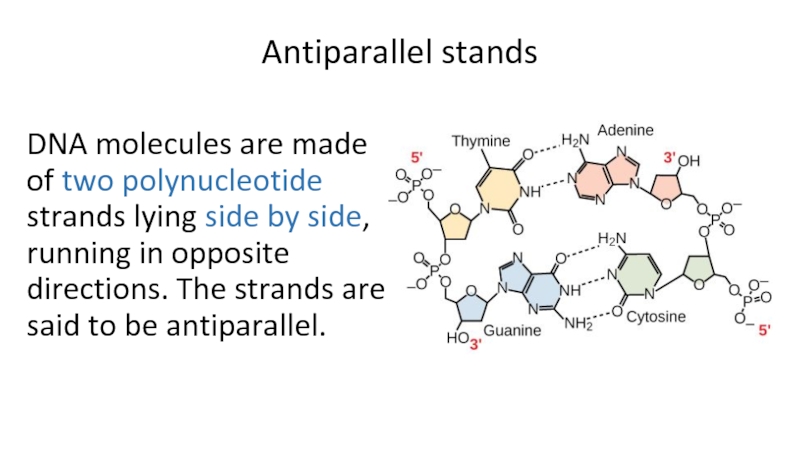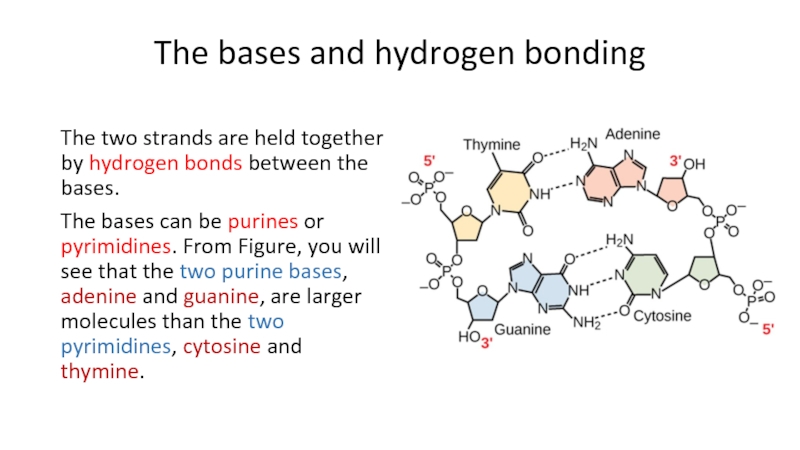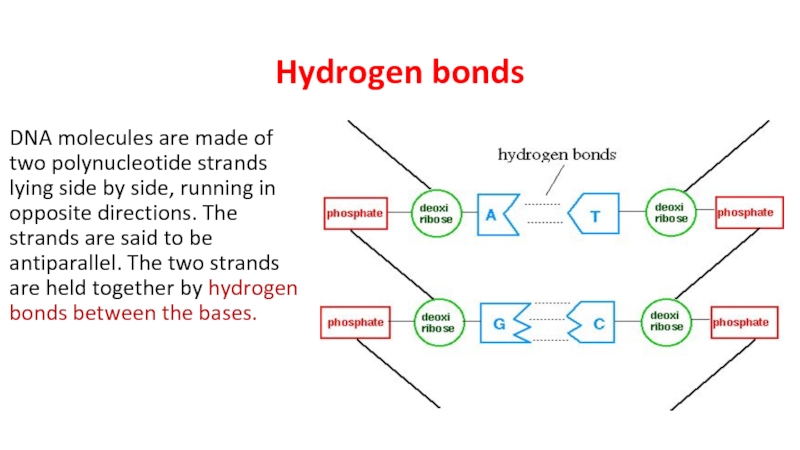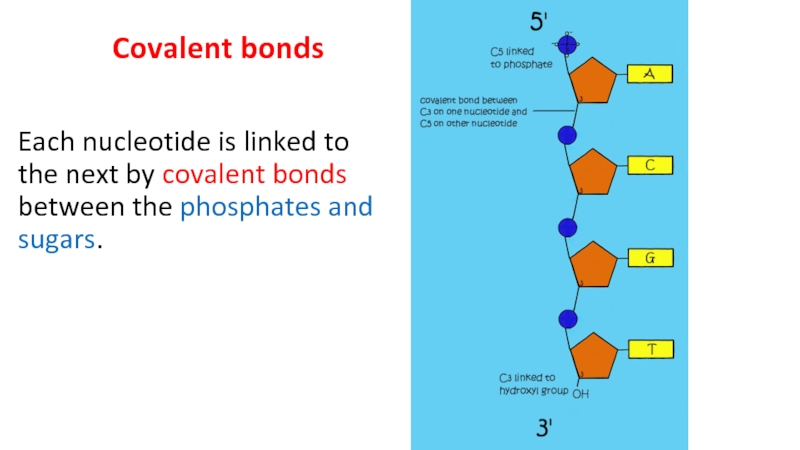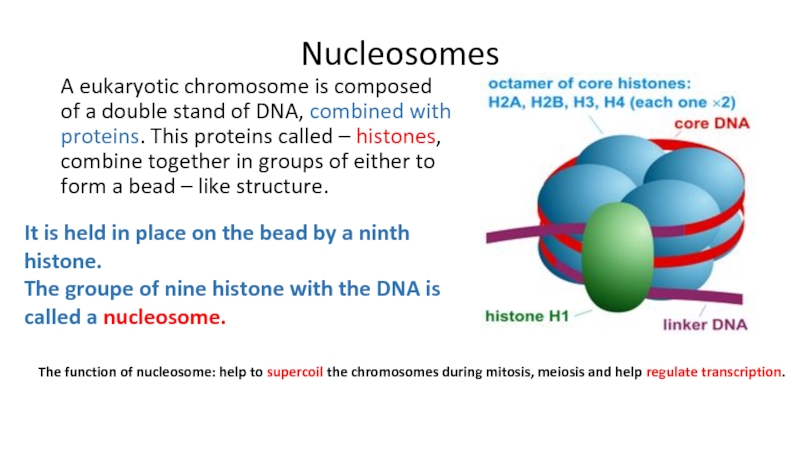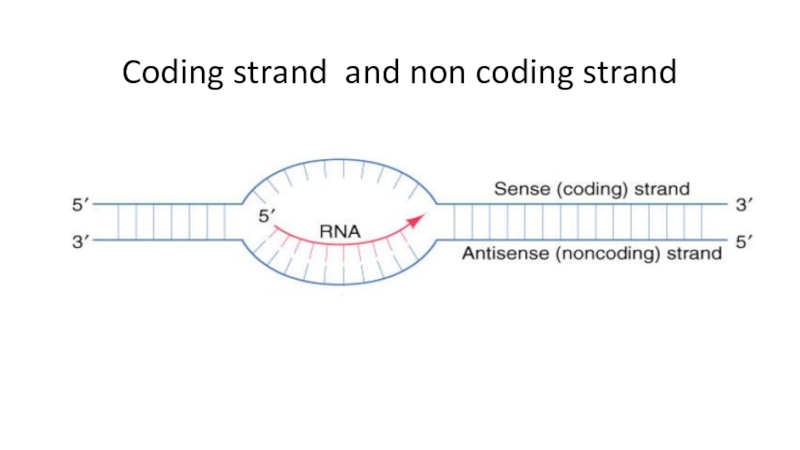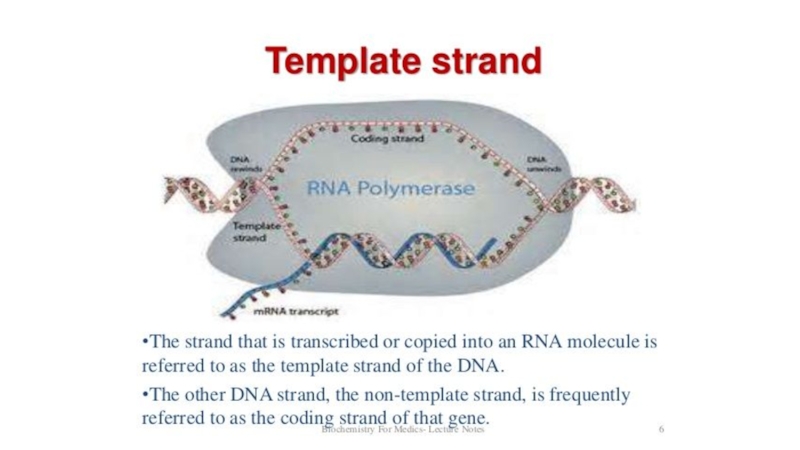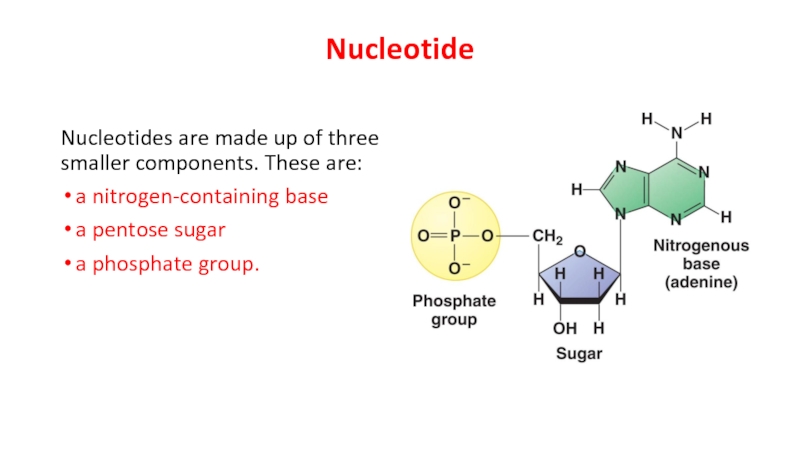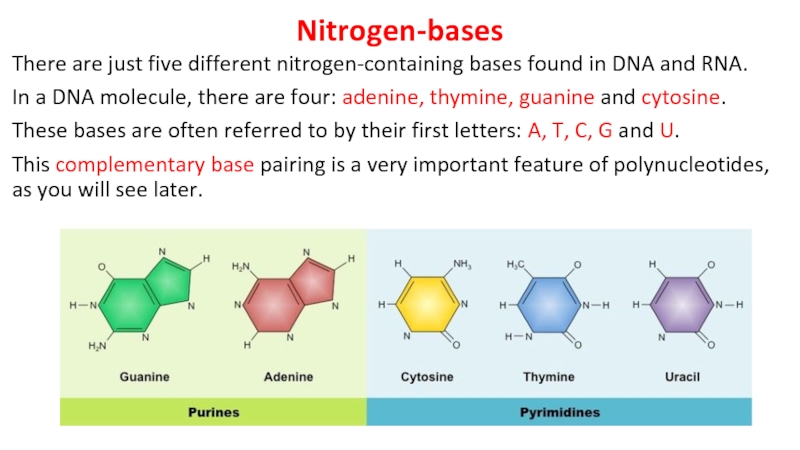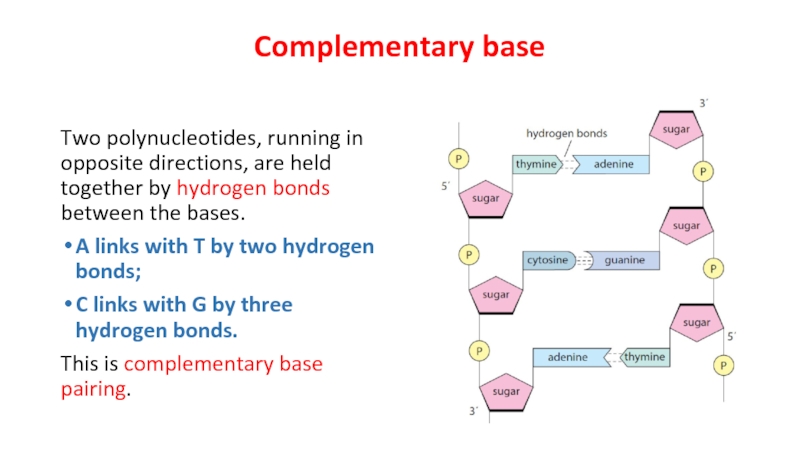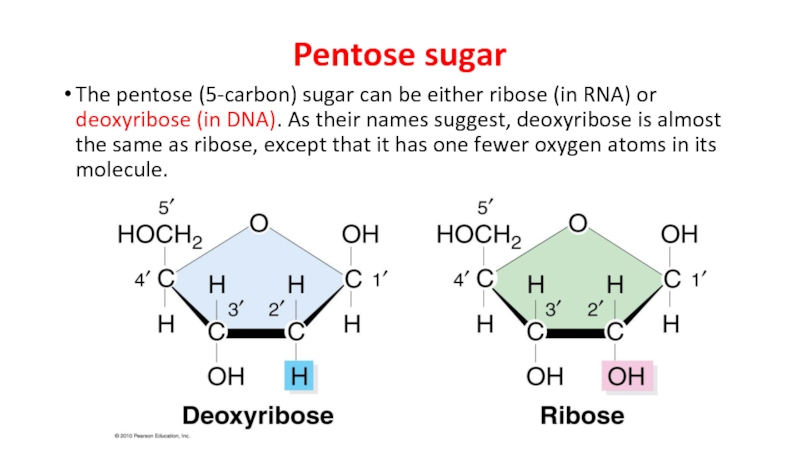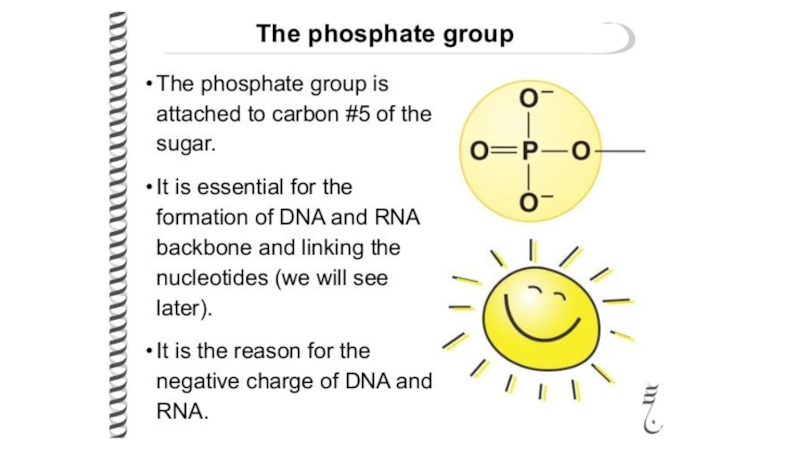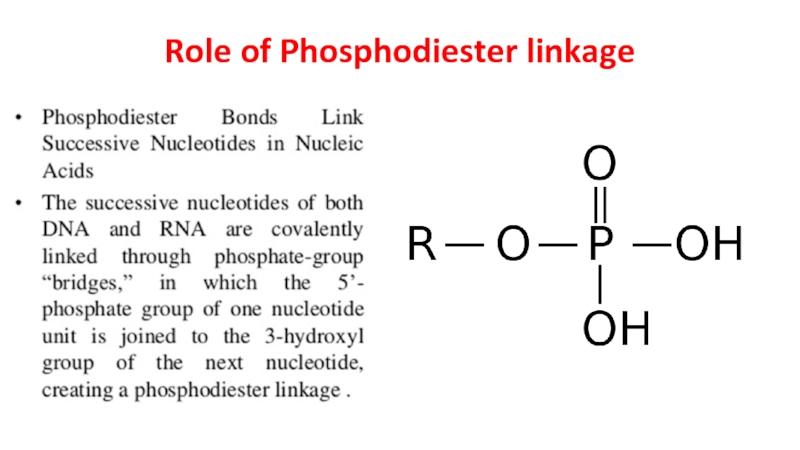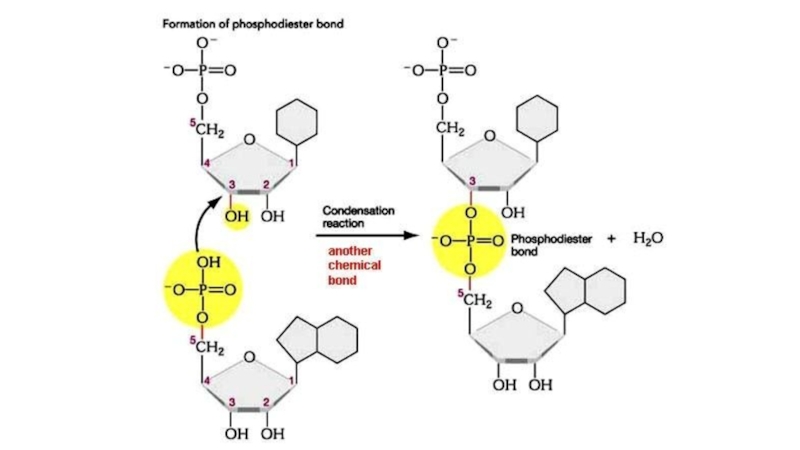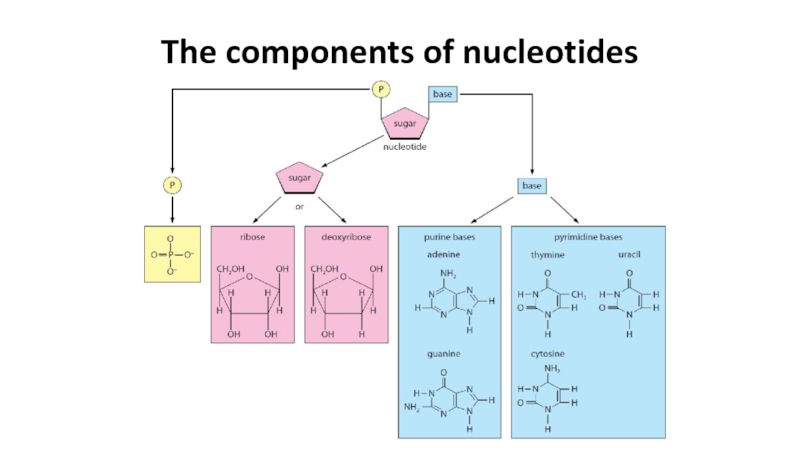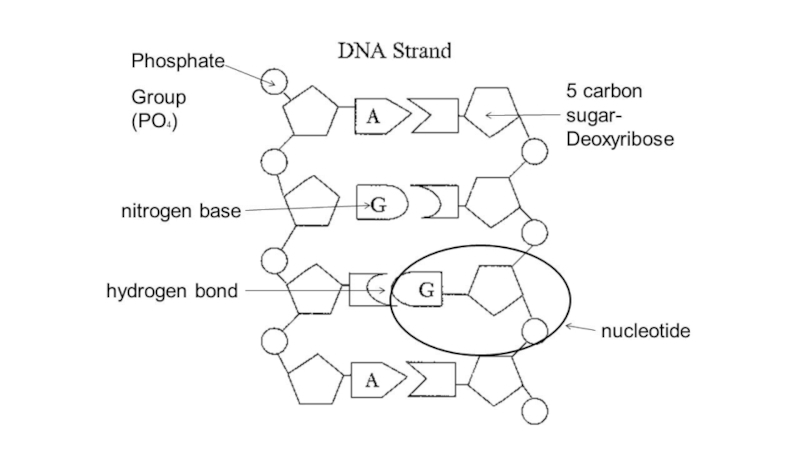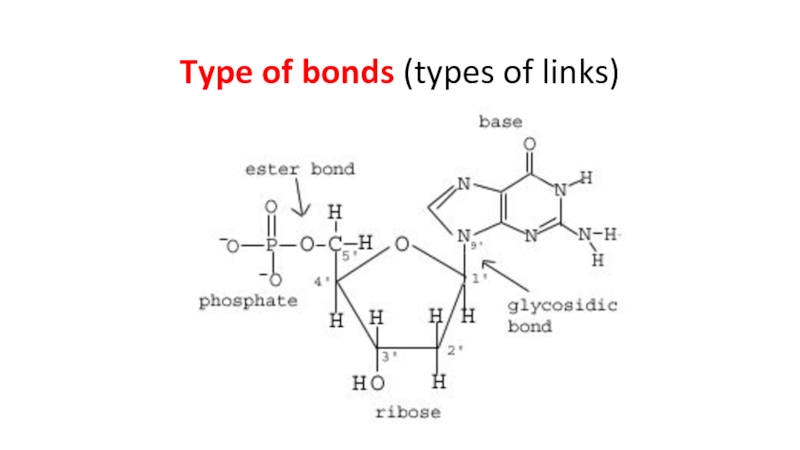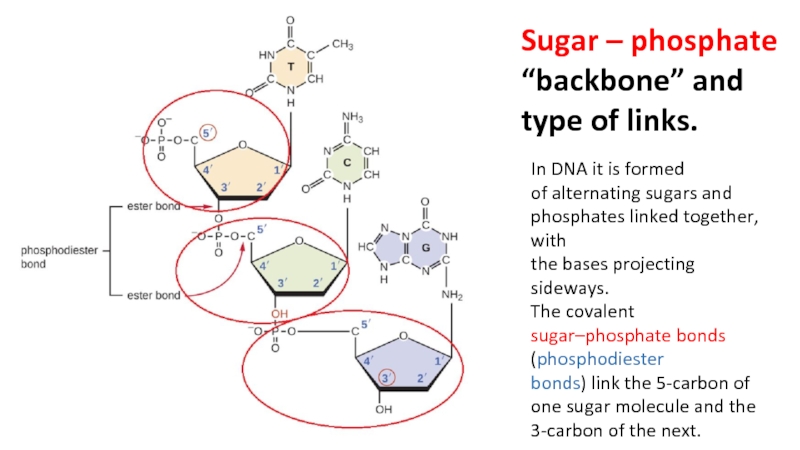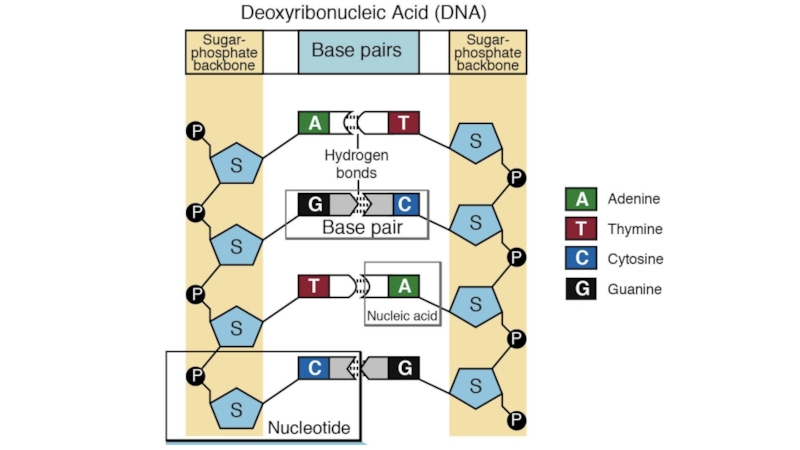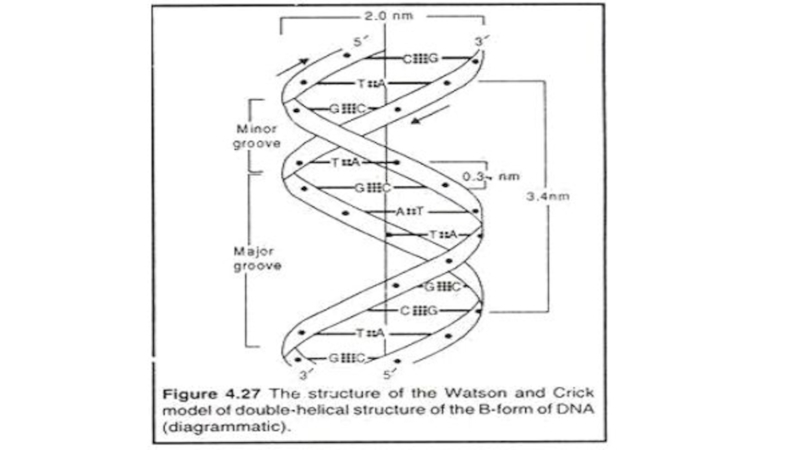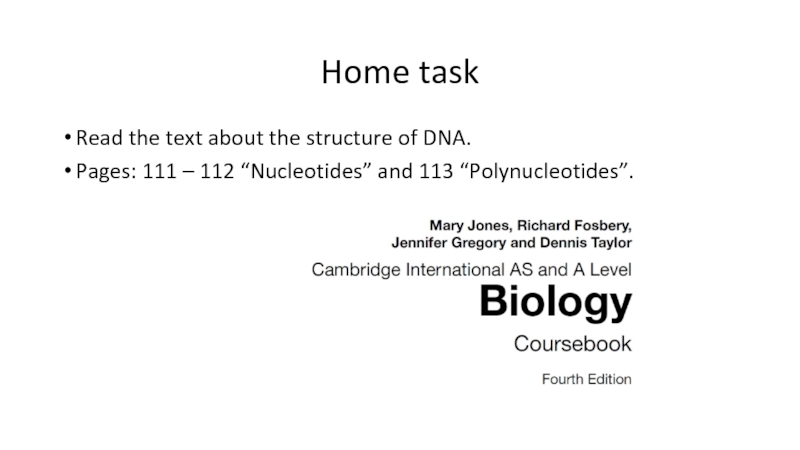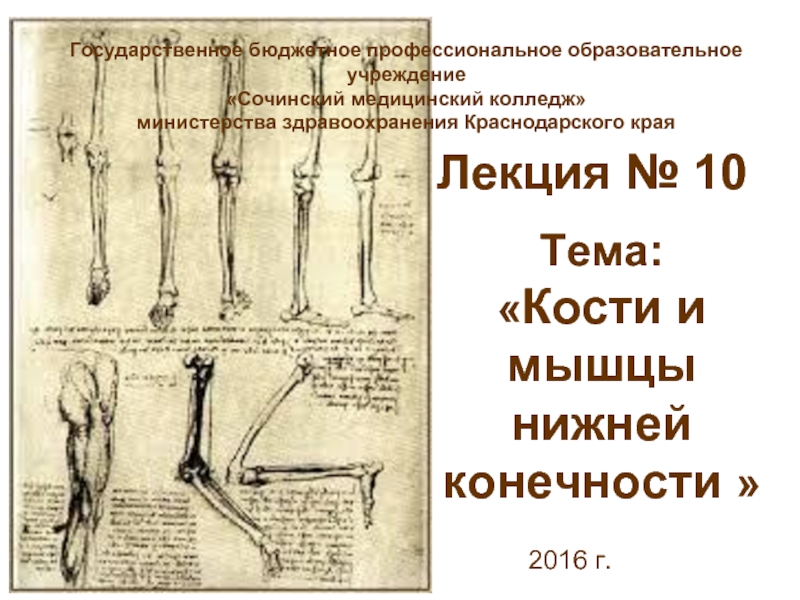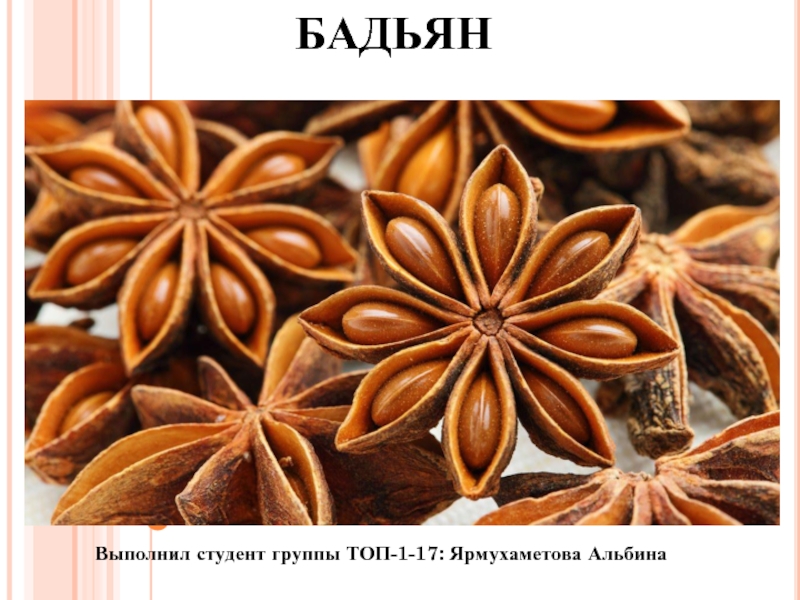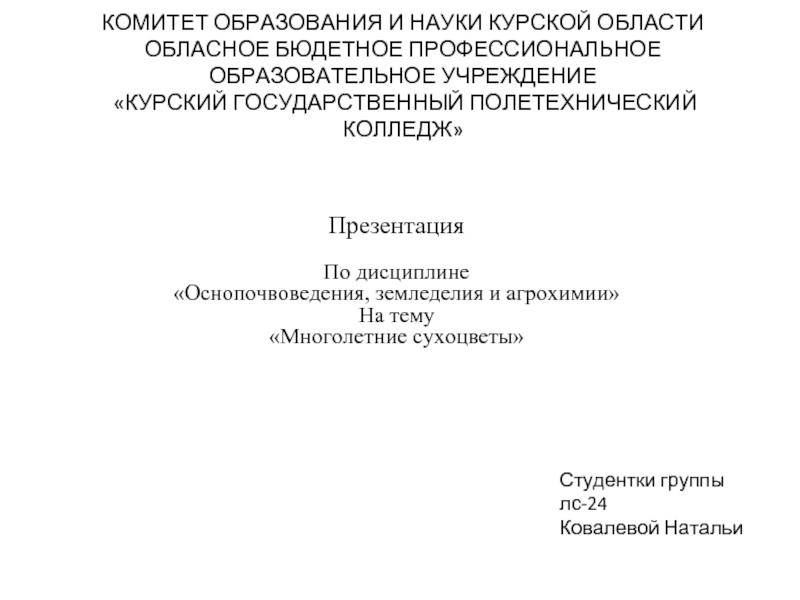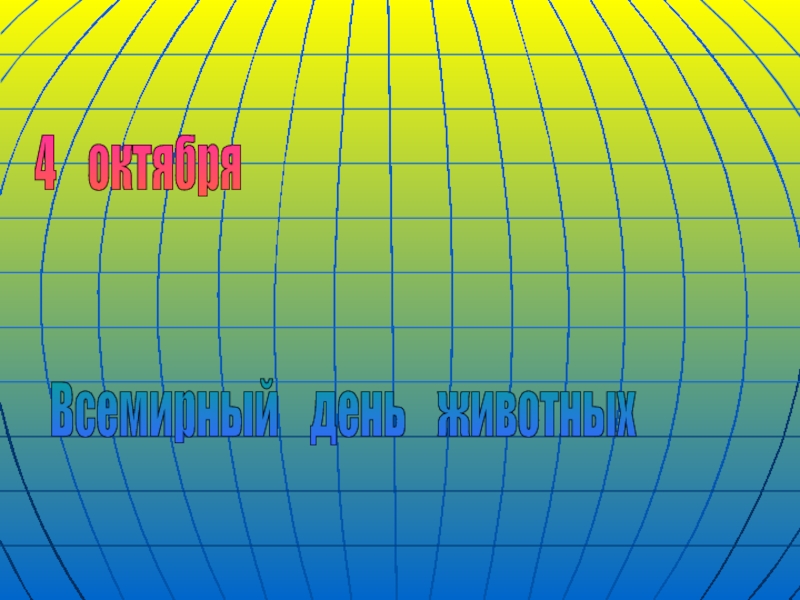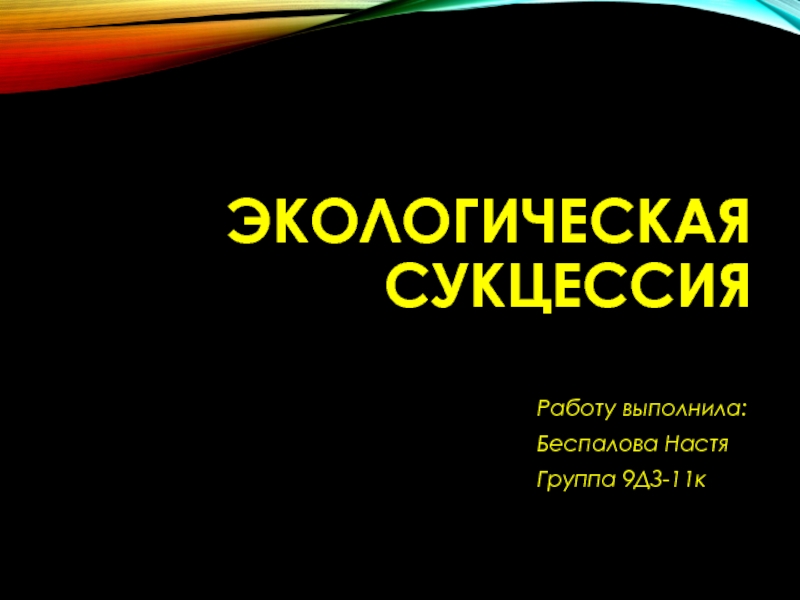- Главная
- Разное
- Дизайн
- Бизнес и предпринимательство
- Аналитика
- Образование
- Развлечения
- Красота и здоровье
- Финансы
- Государство
- Путешествия
- Спорт
- Недвижимость
- Армия
- Графика
- Культурология
- Еда и кулинария
- Лингвистика
- Английский язык
- Астрономия
- Алгебра
- Биология
- География
- Детские презентации
- Информатика
- История
- Литература
- Маркетинг
- Математика
- Медицина
- Менеджмент
- Музыка
- МХК
- Немецкий язык
- ОБЖ
- Обществознание
- Окружающий мир
- Педагогика
- Русский язык
- Технология
- Физика
- Философия
- Химия
- Шаблоны, картинки для презентаций
- Экология
- Экономика
- Юриспруденция
Functions and structures of DNA and nucleotide презентация
Содержание
- 1. Functions and structures of DNA and nucleotide
- 2. Functions and structures of DNA and nucleotide
- 3. Learning objectives 11.4.1.8 establish a link
- 4. success criteria DNA: 1. Knows the structure
- 5. Terminology DNA/ nucleotide Purines/pyremidines Adenine/guanine/ cytosine/
- 6. DNA DNA stands for deoxyribonucleic acid. DNA
- 7. DNA structure The 3’ -5’ linkage Antiparallel stands The bases and hydrogen bonding Nucleosomes
- 8. The 3’ -5’ linkage The carbons in
- 9. Antiparallel stands DNA molecules are made
- 10. The bases and hydrogen bonding The two
- 11. Hydrogen bonds DNA molecules are made of
- 12. Covalent bonds Each nucleotide is linked
- 13. Nucleosomes A eukaryotic chromosome is composed of
- 14. Coding strand and non coding strand
- 16. Nucleotide Nucleotides are made up of
- 17. Nitrogen-bases There are just five different
- 18. Complementary base Two polynucleotides, running in
- 19. Pentose sugar The pentose (5-carbon) sugar
- 21. Role of Phosphodiester linkage
- 23. The components of nucleotides
- 25. Type of bonds (types of links)
- 26. Sugar – phosphate “backbone” and type of
- 29. Home task Read the text about the
Слайд 3Learning objectives
11.4.1.8 establish a link between DNA structure and its
11.4.1.9 describe the chemical structure of the nucleotides and explain their connection and location in the DNA molecule
Слайд 4success criteria
DNA:
1. Knows the structure of DNA.
2. Describes the functions of
3. Establish a link between DNA structure to its function.
Nucleeotide:
1. Knows the chemical structure of a nucleotide.
2. Describes their connection.
3. Explain how the nucleotides are located in the DNA.
Слайд 5Terminology
DNA/ nucleotide
Purines/pyremidines
Adenine/guanine/ cytosine/ thymine
Monomer/polymer
Phosphate group/pentose sugar/ deoxyribose/ nitrogenous-bases
H-bond/ covalent bond/
Слайд 6DNA
DNA stands for deoxyribonucleic acid. DNA is also polymer, made up
Слайд 8The 3’ -5’ linkage
The carbons in the sugar are numbered from
The base is attached to carbons 1.
Carbon 2 has just a hydrogen attached instead of an OH group. (called - deoxyribose)
Carbon 3 is where te next nucleotide attaches in one direction.
Carbon 5 has a phosphate group attached to it.
This means that each nucleotide is linked to those on either side of it through carbons 3 and 5.
Слайд 9Antiparallel stands
DNA molecules are made of two polynucleotide strands lying side
Слайд 10The bases and hydrogen bonding
The two strands are held together by
The bases can be purines or pyrimidines. From Figure, you will see that the two purine bases, adenine and guanine, are larger molecules than the two pyrimidines, cytosine and thymine.
Слайд 11Hydrogen bonds
DNA molecules are made of two polynucleotide strands lying side
Слайд 12Covalent bonds
Each nucleotide is linked to the next by covalent
Слайд 13Nucleosomes
A eukaryotic chromosome is composed of a double stand of DNA,
It is held in place on the bead by a ninth histone.
The groupe of nine histone with the DNA is called a nucleosome.
The function of nucleosome: help to supercoil the chromosomes during mitosis, meiosis and help regulate transcription.
Слайд 16Nucleotide
Nucleotides are made up of three smaller components. These are:
a
a pentose sugar
a phosphate group.
Слайд 17Nitrogen-bases
There are just five different nitrogen-containing bases found in DNA
In a DNA molecule, there are four: adenine, thymine, guanine and cytosine.
These bases are often referred to by their first letters: A, T, C, G and U.
This complementary base pairing is a very important feature of polynucleotides, as you will see later.
Слайд 18Complementary base
Two polynucleotides, running in opposite directions, are held together
A links with T by two hydrogen bonds;
C links with G by three hydrogen bonds.
This is complementary base pairing.
Слайд 19Pentose sugar
The pentose (5-carbon) sugar can be either ribose (in
Слайд 26Sugar – phosphate “backbone” and type of links.
In DNA it is
of alternating sugars and phosphates linked together, with
the bases projecting sideways.
The covalent sugar–phosphate bonds (phosphodiester
bonds) link the 5-carbon of one sugar molecule and the
3-carbon of the next.
